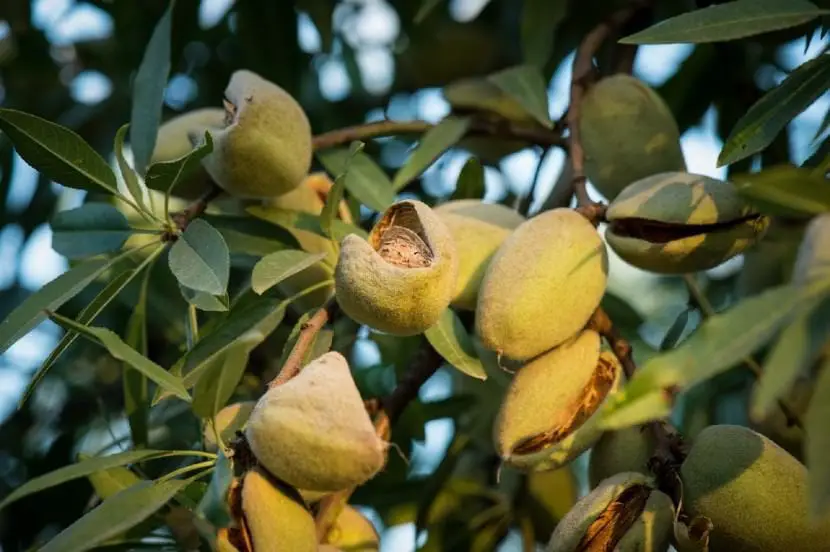

Water is the basic food for life. All of us here need it to exist, including plants. Although we find a greater concentration of them both in the humid tropical forests and in the forests of temperate regions, the reality is that if we want to find drought-resistant fruit trees, it is best to take a look at those that they have in neighboring gardens. , or come and get information on the blog .
There are quite a few fruit trees that do not need a lot of water to be able to grow, develop and bear delicious fruits. As for example those that we suggest below.
Carob tree


El carob tree, whose scientific name is Ceratonia siliquais an evergreen tree native to the Mediterranean region that grows to a height of 5-6 meters. Its fruits, the carob beans, ripen during the summer, and almost without needing water. This is an amazing plant that, having a wide crown, ends up giving very good shade. It supports well the cold and frosts down to -10ºC.
Almond


El almond, whose scientific name is Almondis a deciduous fruit tree native to western Asia and the Caucasus, although it can also be found throughout the Mediterranean region because the Romans spread it throughout the territory in its day. It is a very beautiful species, reaching a height of 7 meters maximum, and producing fruits (almonds) that ripen in autumn.. It resists drought well, but likes to receive at least one weekly watering in summer. Withstands cold down to -5ºC.
Pomegranate


El pomegranate, whose scientific name is Pink garnetis an evergreen fruit tree native to the Mediterranean region and western Asia. Its fruits finish ripening in summer, at which time they are harvested. It reaches a height of 5-6 meters, being able to branch from very low. It is very resistant to drought, since it can live with one or two weekly waterings from the second year, which will be when its roots have already developed enough and the plant has adapted. It is very interesting, not only for its fruits but also for its rusticity: it supports up to -10ºC.
Fig tree


La fig tree, whose scientific name is loaded with figsis a deciduous fruit tree native to the Mediterranean region that bears fruit towards late summer / early fall. With a height of about 5 meters, it is a magnificent and resistant plant that withstands high temperatures (up to 40ºC), mild frosts (down to -5ºC) and, of course, drought. In fact, once established, which you will achieve in the second year, it will be enough to water it twice a week in summer and every 6-7 days the rest of the year.
Olive


El olive, whose scientific name is European oilsis an evergreen fruit tree also native to the Mediterranean region. It is a tree that, over time, ends up having a trunk of almost 1m in diameter, full of scars and cracks that give it an incredible ornamental value. In addition, it is one of those plants that does not matter to water them from the second year, since they take care of themselves with the rain that may fall (that yes, at least 350mm of annual precipitation must be registered). As if that were not enough, it supports frosts down to -10ºC. Its delicious olives are harvested in summer.
stone pine


Although conifers and trees have followed different evolutionary paths (the former, for example, belong to the group of gymnosperms while the latter are angiosperm plants except for the Ginkgo biloba) are often classified as trees, and since the stone pine produces pine nuts that are edible, we did not want to leave it to ourselves. This is a pine that grows in the Mediterranean region, and that bears fruit in summer.
It withstands wind and saline soil, high temperatures and can adapt well to living with little water. And, yes, also resists frostup to -12ºC.
Do you know other drought resistant fruit trees?
